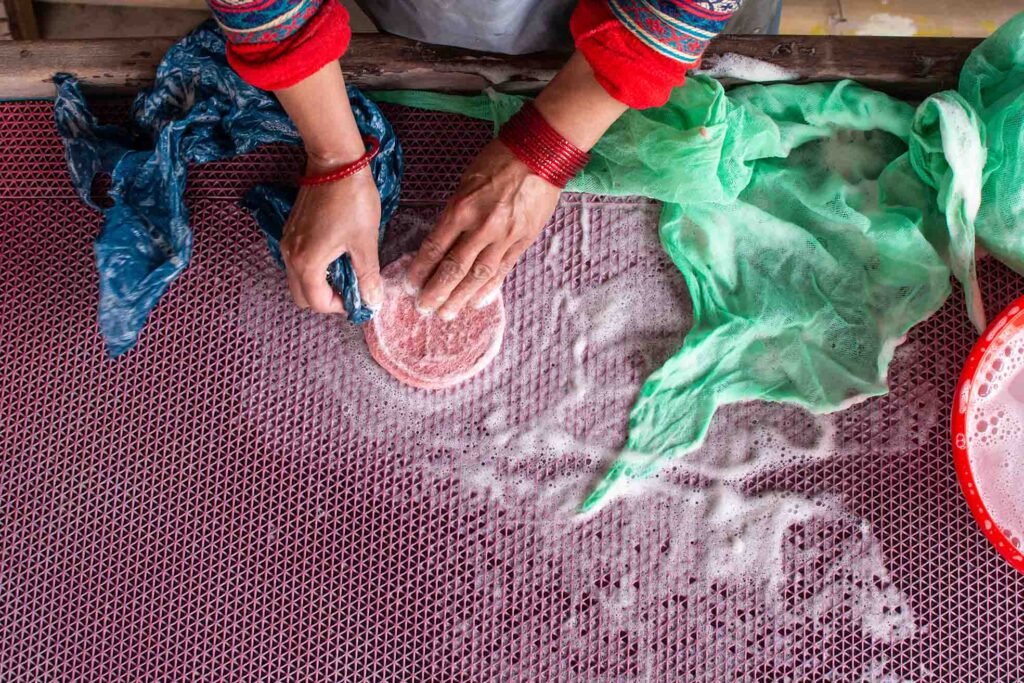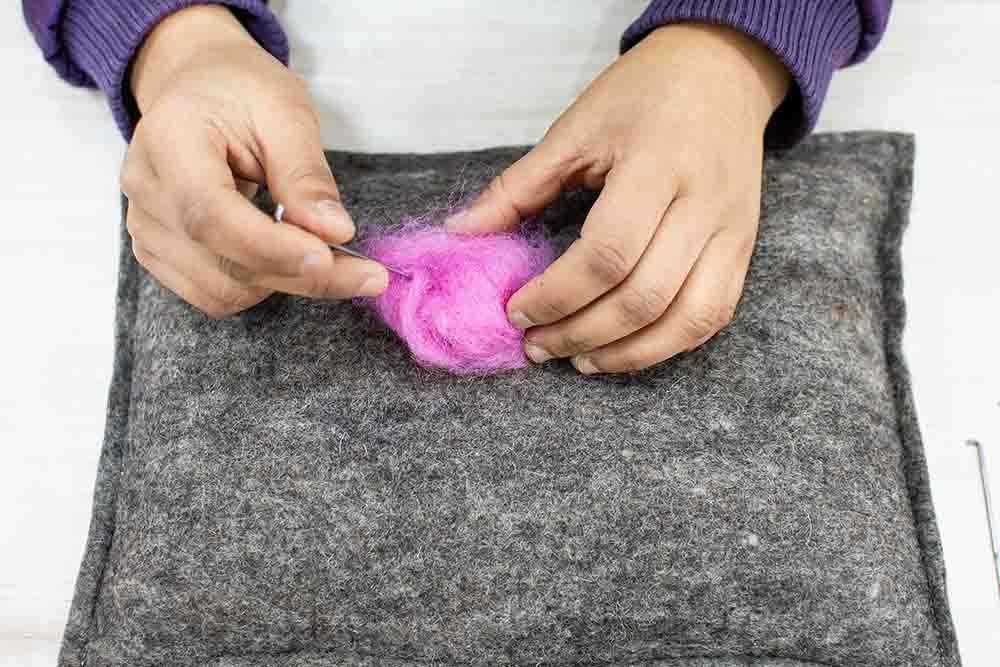You might have come across felting a few times and want to know more about the felting process. There must be different questions in your mind like how to felt fiber, how felting works, and many more.
Don’t worry we got you!
Here we are going to talk about everything about felting. We are going to break down every felting method and how it works.
About Felting
Felting is the process of matting together different fibers together to form a textile material called felt. Felting can be done on natural fibers like animal fur or wool and synthetic fibers like petroleum-based acrylic or acrylonitrile or wood pulp-based rayon.
Regarding the history behind felting, it is believed that felting originated from the central part of Asia. Different pieces of evidence of felt-making dating back to the first century and sixth century have been found in Siberia in Northern Mongolia. This makes felting one of the oldest methods of producing textile materials like felt.
How Does Felting work?
The fibers which are used for felting have scales that are naked to the eyes. They are so tiny that you need a microscope to see them.
When the fibers are shocked using heat, moisture or motion then the scales open up. The rubbing motion causes the fiber to latch onto each other and form a tight bond. This causes the fiber to lock down on fibers to form a tighter mass called felt.
There are different techniques under the felting. They are wet felting, dry or needle felting, and carroting techniques. Depending on the desired result the fibers can be felted using different techniques.
Felting Techniques
Normally there is three main felting technique. They are wet felting. dry felting and carroting. These three techniques are widely used in felting.
Wet Felting

In this technique, heat and moisture play a vital role in felting the fiber. We need warm water and soap solution, a felting surface, and a net or gaze for the felting process.
Warm water and soap solution should be foamy. The heat from the warm water opens up the scales of fiber. When agitation is applied the foam makes it easier to work with fiber. Due to the rubbing motion, the fibers latch on to each other tightly and form a felt material.
This is the basic method of felting. There are other different methods under the wet felting technique as well. The techniques differ based on the desired end product. The wet felting method is used for different purposes like creating cat caves, felt balls, felt shoes, felt carpet, and many more.
Dry Felting or Needle Felting

The needle felting method is opposite to the wet felting method. Unlike the wet felting method, you do not need any water. As the name suggests, you will be working with dry fiber to create felt.
In needle felting, you need a special type of needle with a barbed end to felt the fiber. After taking the desired amount of wool it is placed onto a felting cushion or foam. The special needle is poked continuously to bind the wool.
The needle used for felting are quite delicate, so it is crucial to use the needle in an up and down motion that is vertical position. This prevents the needle from breaking easily.
Needle felting is mainly used for creating 3D objects and figures. This method is also good for meeting your old wool garment or felt products.
Carroting
Carroting was invented in the 17th century and was used until the 20th century. This method was used to produce good-quality hats from the animals like beaver, rabbits, hares, and other animals.
In this method, mercury salt diluted in nitric acid was used on pelt or fluff to dissolve the keratin scales from the fur. This made it possible for the fur to interlock easily.
This method was a dangerous method of felting as it produced mercury fume when in contact with heat which is very poisonous when inhaled. It affected the workers physically causing loss of teeth, loss of coordination, and as well as mentally causing hallucination, extreme paranoia, and many more. The effect became well known as ‘mad hatter disease’ which led to a ban on the use of mercury.
Now mercury is not used for the carroting process. In place of mercury, hydrogen peroxide is used as it produced almost the same effect and was quite cheaper.
FAQs
To sum up, felting happens when the scales of the fiber open up and latch on each other. This is how felting works. The external heat, moisture, and agitation further help in felting the fibers.
The fiber can be felted using different techniques. Some techniques used in the past were quite dangerous but different measures had been taken to prevent any effect on the health of the consumer and the producer.
Is felting difficult?
No, felting is not hard. It does require some skill but it is not hard to learn. If you have the will to learn and with patience and desire to finish your project then you are able to master felting.
Can you feel without a felting needle?
Yes, felting can be done without felting a needle. There are different methods for felting. Most common are wet felting and needle felting. In the wet felting method, you only need water and a detergent solution to felt the wool. So, if you don’t want to use a needle for felting then wet felting is for you.
What is the art of felting?
Felting is the oldest process of making textile art. In this method heat, moisture and agitation are applied to the fiber to cause the fiber to interlock to each other and form a felt fabric.
There are different ways to felt a fabric. The common ones are wet felting and dry felting. In wet felting, as the name suggests, moisture from the water is used to felt the fiber. Dry felting is also called needle felting where a special needle with the barbed end is used to felt the fiber.
What is wet felting?
Wet felting is the process of interlocking the fiber to each other by using heat and moisture. In this method, warm water and detergent solution is used to matt the fibers together.
This method is best for beginners as you will not be using any kind of sharp object like felting needles. You won’t have trouble hurting yourself in the felting process.
How do you start felting?
Felting can be both simple and complicated. It depends upon the type of method you are using or the craft you are attempting. Wet felting is a good choice for a beginner.
In wet felting, you need materials like warm water and soap solution, wool of your choice, and a felting surface. You can start by felting simple shapes and get a hang of it. You can also check out our blog ‘How to Felt Wool? Ways and techniques.
How to feel a ball?
Felt ball is one of the easier beginners projects that you can start. It can be made by both wet felting and needle felting methods. Felt balls are most of the time made using the wet felting method.
In the wet felting method, you take a ball of wool and using warm water and soap solution you form it into a ball using your hand. You need to continue doing so until the wool is felted and you feel a dense ball forming. Felting one ball takes about 10 minutes.
In the needle felting method, you take the desired amount of wool and form it into a ball. Using the special needle for felting, poke vertically to interlock the fibers. Continue the motion until the fiber is felted completely.
For All kinds of handmade needle felted crafts visit woollyfelt.com. Fairtrade Certified !

